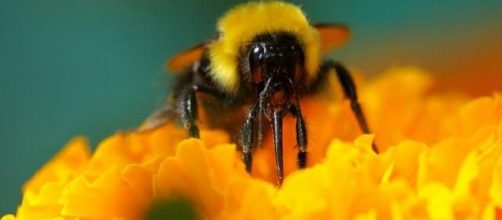The inaugural "bumblebee highway" has been opened up in Oslo, Norway, as locals react to concerns about the future prospects for the insects. The Oslo Garden Society have decided that they need to take action now if they are to avoid several of the bee species becoming extinct in the near future.
Novel approach
In a ground-breaking move on behalf of the Norwegians, pollen stations have been set up approximately 250 metres apart throughout Oslo, the nation's capital city. It is hoped that by creating such a corridor of available 'feeding stations' that it may encourage more bumblebees to fly through the area.
Flowerpots have been positioned on the balconies and rooftops of buildings, a strategy designed to hopefully remedy the pressing concerns regarding the low numbers of bees.
Major problem developing
Studies suggest that as many as six of the 35 bee species found in Norway are threatened by extinction at present. City centres are often among the most hostile environments for insects such as bees, so the move is a positive reaction to the threat. Tonje Waaktaar Gamst (of the Oslo Garden Society) told the local press that the initiative would help the bees to "withstand manmade environmental stress better."
The local population are being encouraged to get involved, with areas of particular concern being highlighted.
It is hoped that people will be inspired to help to fill the gaps.
Without the introduction of more flowers to provide the nectar that the bees require, they are likely to die from starvation in the city environment. As a consequence, the agriculture that requires bee numbers to be maintained also suffers.
America reacting to their problem
Similar action is planned in America as unveiled recently by President Obama. There the issues relate to the reduced numbers in the Monarch butterfly and honey bee populations. The hope is to create a corridor for the butterflies along Interstate highway 35, linking Mexico and Minnesota. With such large distances involved and national borders being crossed, the project requires co-operation between various agencies.
American, Mexican and Canadian agencies are all expected to be involved to bring the plan to fruition.
It is planned for the butterfly habitats along the highway to be rehabilitated, with prairie vegetation being replanted. $3.2 million has already been set aside for the Monarch project. Estimates hope that through the proactive efforts, Monarch numbers will soar from 56.5 million today up to 225 million by 2020.
Monarch butterflies face the threat from a reduction in their food source (ie. nectar), through the loss of flowers and milkweed that would normally provide it for them. Intensive agriculture in the Midwest, especially the use of the herbicide 'Roundup', has also been killing them off in large numbers.

